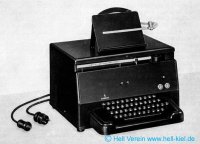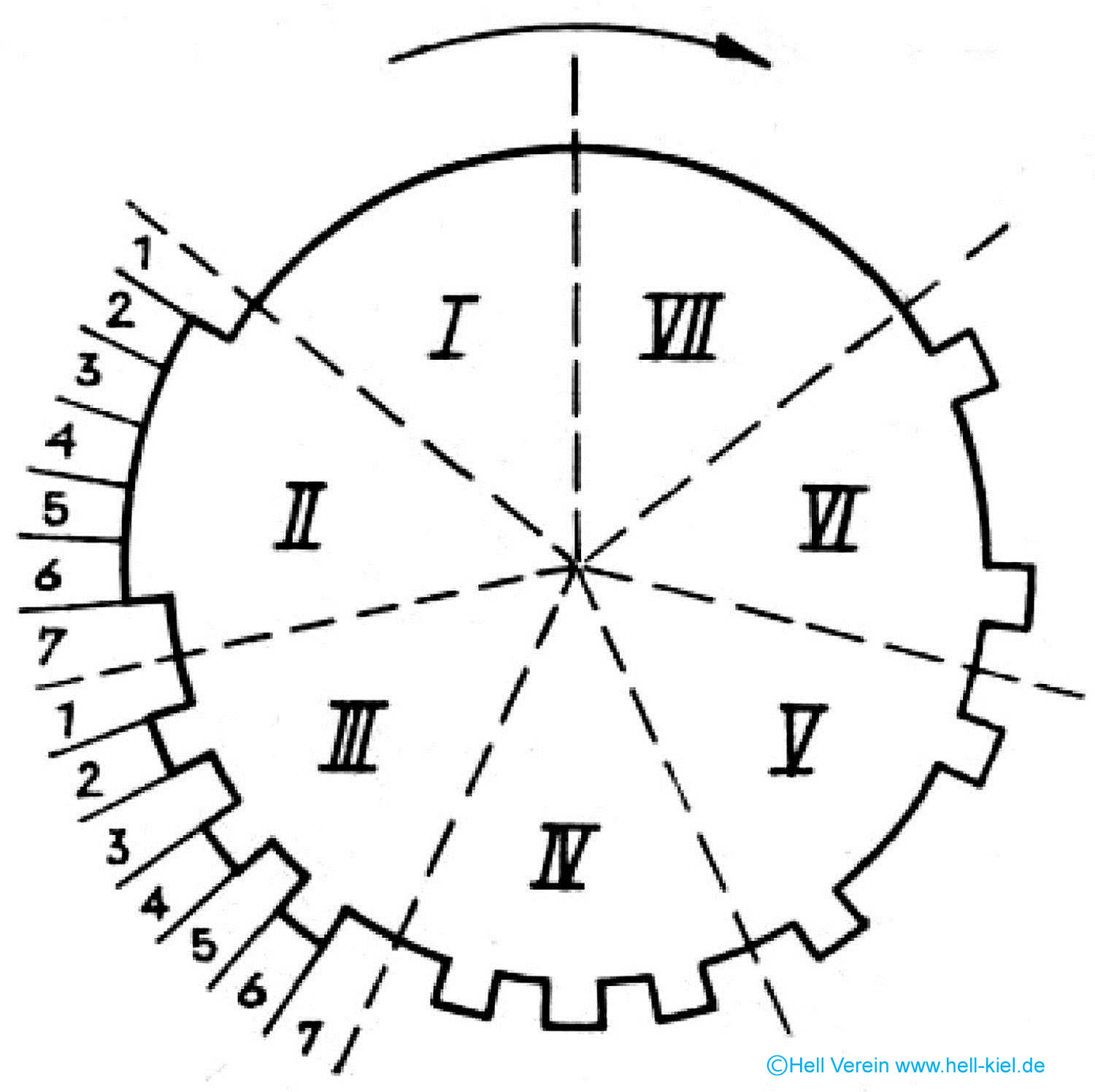| Hellschreiber GL 72 (1950) | |||||||
|
The "Hellschreiber" is a teletype device, which transmits characters as a matrix of black
and white picture elements (pixels), as opposed to normal teletype writers, which transmit
a 5-bit-code for each character. Thus, the Hellschreiber transmits an "image" of the character,
the image being made up of a matrix of 7 x 7 pixels. This method makes the transmission
much less sensitive to noise on the transmission channel.
The first Hellschreiber models were developed by Hell already since 1929. Just be-cause of the high noise immunity these devices were also used by military forces. For that purpose
a special very compact model was developed, named "Feld-Hellschreiber".
|
|||||||
|
|
|||||||
|
The Hellschreiber GL 72 can send and receive text messages, up to
360 characters per minute.
When sending text, the text is typed in on a keyboard just as with a
normal teletype writer.
|
|||||||
|
|||||||
|
With this method a disturbance on the transmission channel can only distort a
few pixels; however, the character is generally still readable. If in a normal
teletype writer transmission the 5-bit-code is distorted, a completely different
character is received.
When the Hellschreiber operates as a receiver, it writes the received pixels on a paper strip.
|
|||||||
|
|||||||
|
The helix has two turns with respect to the width of the paper, i.e. there are two touching
points between the helix and the blade and the characters are printed twice, one below the
other. This has the effect that the text is still readable, even if the transmitter and the receiver
are not exactly synchronized with respect to their motor speeds. In such a case the text lines
are printed slightly slanted, but at least one of the two characters is recorded completely on
the paper strip.
|
|||||||
|
(German; 1,4 Mbyte)
|
|||||||
|
(German; 38 pages; 4,5 Mbyte)
|
|||||||
|
(German, 2 pages, 800 Kbyte)
|
|||||||




